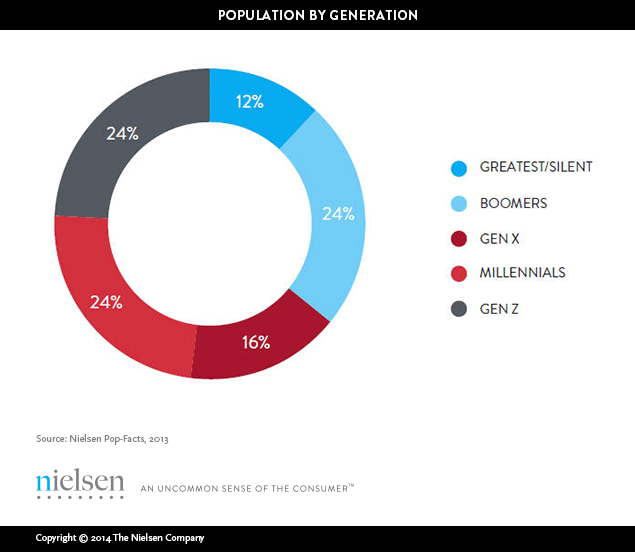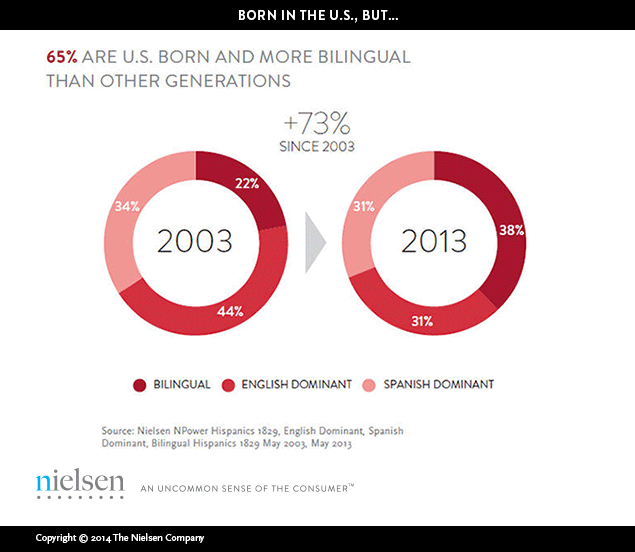It takes a lot to define a generation, and no two generations are alike. As much of the world is watching the young adults in the second-youngest generation develop and become full-fledged consumers, marketers are placing more and more emphasis on how to engage with them. Most are children of Baby Boomers, and all are eager to carve out a unique identity as they come of age.
So who are they and why are marketers and brands getting to know them?
In the broadest of terms, they’re the young adults born between 1977 and 1995. From a numbers perspective, they are 77 million strong and make up as much of the U.S. population (24%) as Baby Boomers and Generation Z (those born after 1995). It’s true they founded the social media movement, but they’re anything but couch potatoes. They’re still climbing the income ladder, but they make up the most educated generation, as 23 percent have a Bachelor’s degree or higher.

Current incomes range from $25,000 to $48,000 for younger (18-27) and older (28-36) Millennials, respectively, but they’re coming of age in the most dire economic climate since the Great Depression—making their families, communities and social networks even more valuable as they band together.
The Most Ethnically Diverse Generation
While they make up the same amount of the U.S. population as Boomers, the similarities end there. Only 21 percent are married, compared with 42 percent of Boomers, and Millennials make up 20 percent of same-sex couples. They prefer to live in dense, diverse urban villages where social interaction is just outside their front doors. They value authenticity and creativity, and they buy local goods made by members of their communities. They care about their families, friends and philanthropic causes.
Millennials also make up the most racially and ethnically diverse generation (19% Hispanic, 14% African American and 5% Asian)—and this growth in diversity will only increase as they start their families. While the Boomer population was fueled by high birth rates, the Millennial population has been driven by immigration.
Millennials are 14 percent first generation and 12 percent are second generation, indicating strong ties to their home country–from food choices to language and media preferences. These ties keep Millennials connected to their ethnic and cultural backgrounds, as 71 percent say they appreciate the influence of other cultures on the American way of life, compared with 62 percent of Boomers.
Hispanics make up the largest ethnic demographic at 19 percent, and Nielsen expects the Hispanic population to grow by 167 percent by 2050. Asians currently make up 5 percent of the Millennial population, but Nielsen expects this demo to grow by 142 percent growth by 2050. Ten years ago the majority of the Millennials either spoke only English or mostly English in the home. Today, the bilingual Hispanic is the dominant group within these Millennials.

Multigenerational households are more prominent in Hispanic and Asian cultures, a trend that can affect family dynamics, household watch and buy patterns and housing development, and further strengthen ties to the home country.
So when you think of Millennials, try not to generalize. They make up a big—and diverse—piece of the pie, and the piece they represent will get larger. As they come of age and increase their spending, the Millennial cohort will grow as a percentage of the U.S. population. Those who understand them and how to best reach and engage them, will be in the best position to capitalize on the opportunity they present.
For more insight, download Nielsen’s Millennials report. To participate in Nielsen’s upcoming Millennials webinar, click here.



